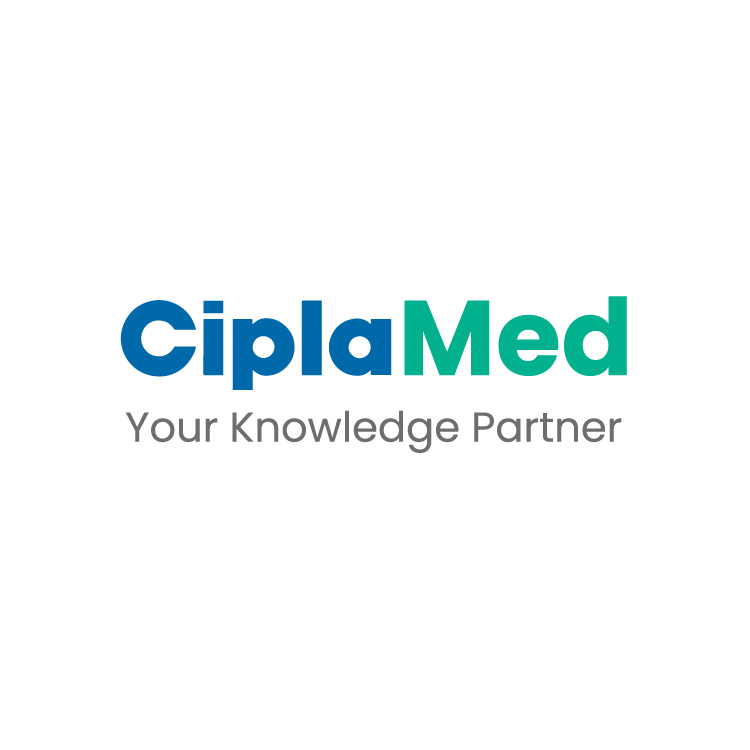ACR 2025: Highlights from Day 4
Long-Term Effect of Selexipag in Systemic Sclerosis-Associated Digital Ulcers: A Case Control, Multicentre, Observational Study
Presenter: Claudia Iannone
Digital ulcers (DUs) affect ~50% of systemic sclerosis (SSc) patients, with over 67% experiencing more than five ulcers during their disease course, causing severe pain and disability. This multicentre retrospective study compared oral selexipag (n=32) to intravenous iloprost (n=64) in treating refractory DUs.
Selexipag showed significantly higher healing rates (87% vs 28% at 96 weeks), faster recovery (75% vs 18% by week 40), and greater improvements in pain (LPS), Raynaud severity (RCS), and ulcer count (all p<0.001). Relapse (5% vs 45%) and new ulcer formation (5% vs 40%) were also lower with selexipag. Its oral route and tolerability make it a promising alternative to IV iloprost for SSc-related Dus.
The Association Between Medication Taper Duration and Time to JIA Disease Flare: A Retrospective Cohort Study
Presenter: Christian-Immanuel Oliveros
This single-site retrospective study explored whether the duration of tapering off JIA medications affects time to disease relapse in oligoarticular (oligoJIA, n=67) and polyarticular JIA (polyJIA, n=41) patients.
Among oligoJIA patients, longer taper durations were linked to higher relapse risk, especially with bDMARDs and in those with multiple joints affected, RF or HLA-B27 positivity (>6 months HR 2.29; >12 months HR 6.41). In contrast, polyJIA patients benefited from gradual tapering (aHR 0.41, p=0.035), with abrupt discontinuation increasing relapse risk. Overall, faster tapers may be safer for oligoJIA patients with favorable profiles, while polyJIA patients should taper slowly to reduce relapse risk. Survival analysis supported these findings.
Risk of Immune-Mediated Inflammatory Diseases and Other Safety Outcomes in Patients with T2DM and Obesity Initiating GLP-1 RA: A Propensity Score-Matched Multi-center Study using the TriNetX Global Network
Presenter: Hsin-Hua Chen
This retrospective cohort study assessed the impact of GLP-1 receptor agonists (GLP-1 RAs) on immune-mediated inflammatory diseases (IMIDs), neurologic and psychiatric conditions, and other safety outcomes in adults with type 2 diabetes or obesity.
Using matched data from the TriNetX network, researchers found no increased risk of IMIDs, gout, or osteoarthritis with GLP-1 RA use. Instead, GLP-1 RAs were linked to significantly reduced risks of all-cause mortality (HR 0.38 in T2DM; HR 0.23 in obesity), dementia (HR 0.51; HR 0.21), cardiovascular diseases, and severe infections. Parkinson’s disease risk was lower only in the obesity cohort. No new safety signals emerged. Overall, GLP-1 RAs showed favorable safety and protective effects without triggering autoimmune conditions.
Fetal and Maternal Outcomes in Systemic Sclerosis and Very Early Diagnosis of Systemic Sclerosis Pregnancies, A National Prospective Study
Presenter: Anne Murarasu
In the French GR2 prospective cohort (2014–2020), 58 pregnancies in women with systemic sclerosis (SSc) or very early SSc (VEDOSS) were analyzed.
Among 53 pregnancies beyond 22 weeks, 26.4% had adverse pregnancy outcomes (APOs), including preterm delivery ≤34 weeks (3.8%), placental complications (22.6%), and small for gestational age (SGA <10th percentile, 11.3%). Severe postpartum hemorrhage occurred in 11.3%. APO rates were significantly higher than age-matched controls (e.g., preeclampsia 13.2% vs 3.0%, p=0.001). Disease worsened in 39.7% pregnancies, mainly postpartum cutaneous vascular events. Risk factors included diffuse SSc (OR=3.7), prior vascular involvement (OR=3.7), and absence of anti-centromere antibodies (OR=0.2). Live birth rate was 91.4%. SSc pregnancies remain high-risk, requiring close multidisciplinary monitoring.
Complete Metabolic Response on PET/CT In Giant-Cell Arteritis-Related Large Vessel Vasculitis: Comparison of Two Strategies Using Glucocorticoids or Glucocorticoids + Tocilizumab
Presenter: Hubert De Boysson
In this retrospective French Large-Vessel Vasculitis Study Group (GEFA) cohort study of 167 giant-cell arteritis (GCA) patients with PET/CT-confirmed large-vessel vasculitis (LVV), 76 received glucocorticoids (GC) alone and 91 received GC + tocilizumab (TCZ).
A second PET/CT was performed at median 8 months (GC) and 12 months (GC+TCZ; p < 0.0001). Complete metabolic response (vascular uptake extinction) was achieved in 76% of GC+TCZ patients vs 41% with GC alone (p < 0.0001). LVV relapse occurred in 12% (GC+TCZ) vs 5% (GC; p = 0.17). GC discontinuation was more frequent in the GC+TCZ group (79% vs 61%; p = 0.009). These findings support GC+TCZ as a more effective regimen for achieving metabolic remission in GCA-related LVV.
CAR T-cell Therapy in SLE: A Systematic Review
Presenter: Alberto Nordmann-Gomes
This systematic review analyzed 14 studies involving 98 patients with refractory systemic lupus erythematosus treated with chimeric antigen receptor (CAR) T-cell therapy.
Most used CD19-targeted CARs and showed consistent B-cell depletion and reconstitution within 2–3 months. Disease activity scores (Systemic Lupus Erythematosus Disease Activity Index) dropped from 12.8 to 2.3 at 6 months. Cytokine release syndrome occurred in 57% (mostly grade 1), ICANS in 3%, and infections in 21%, neurotoxicity was rare but hematologic toxicity was observed in 17%. Biomarker improvements included normalized complement and reduced anti-double-stranded DNA levels. CAR T-cell therapy demonstrated promising efficacy and safety, supporting its potential role in systemic lupus erythematosus management pending further research.
Effectiveness of Biological and Target-Synthetic Treatment in Patients with Rheumatoid Arthritis and Kidney Dysfunction: A Large Prospective Registry Study
Presenter: Sho Fukui
In this large registry-based study of rheumatoid arthritis patients, those with reduced estimated glomerular filtration rate (<60 mL/min/1.73m²) were approximately 30% less likely to achieve Clinical Disease Activity Index remission after initiating biologic or targeted synthetic disease-modifying antirheumatic drugs. This association persisted even after adjusting for confounders and excluding glucocorticoid use. Sensitivity analyses using chronic kidney disease stage G3a confirmed these findings. Methotrexate discontinuation did not fully explain the reduced treatment response. These results highlight the need for tailored treatment strategies to optimize disease control in rheumatoid arthritis patients with kidney dysfunction.
Comparison of Incidence of Psoriatic Arthritis in Patients with Psoriasis Treated with Interleukin-17 Inhibitors vs Interleukin-23 Inhibitors, Interleukin-12/23 Inhibitors, and Tumor Necrosis Factor Inhibitors in Real-World Practice: A Retrospective Study
Presenter: April Armstrong
The retrospective cohort analysis included patients with PsO (n=3685 post-PSM) treated with IL-17i, IL-23i, IL-12/23i, and TNFi.
Patients treated with IL-17i had significantly lower restricted mean time lost (RMTL) for time with PsA/IA vs. those treated with IL-12/23i (P< 0.05) through 57 months and vs. those treated with TNFi through 58 months (P< .01). IL-17i reduced time with PsA/IA by 45% vs. IL-23i (P=0.052), 61% vs. IL-12/23i (P<0.05), and 74% vs. TNFi (P<0.01). According to the Kaplan-Meier analysis and PSM, IL-17i was superior to the other biologics in terms of preventing IA onset. Findings suggest IL-17 inhibition may delay or reduce PsA development in psoriasis patients, warranting further prospective studies
Glucagon-Like Peptide-1 Receptor Agonists Therapy is Associated in Improvement in Psoriatic Arthritis-Related and Metabolic Outcomes: A Retrospective Analysis of Two Cohorts
Presenter: Lihi Eder
This study assessed longitudinal changes in weight, psoriatic disease activity and cardiometabolic parameters in 48 obese (median age 52.7, BMI 34.9) PsA patients initiated on GLP-1 RA therapy (semaglutide, liraglutide, tirzepatide).
GLP-1 RA therapy was associated with significant weight loss (-6.43 kg; p<0.0001), CRP reduction (-1.1 mg/L; p=0.002), and improved pain (-1.0; p=0.01). Approximately 35.4% of the patients lost 5–10% and 25% lost >10% of their baseline weight. Each 1% weight loss correlated with improvement in DAPSA (β=-0.49), tender joint count (β=-0.18), LDL (β=-0.05), EQ-5D (β=0.0016) and systolic BP (β=-0.67). GLP-1 RA therapy resulted in clinically meaningful weight loss and improved systemic inflammation, pain, and cardiometabolic markers in patients with PsA. PsA improvements were proportional to weight loss, supporting the potential role of GLP-iRA in PsA care.
Impact of Rheumatoid Arthritis Therapeutic Classes on Risk of Major Adverse Cardiovascular Events and Venous Thromboembolism: A Population-Based Cohort Study
Presenter: Mohammad Movahedi
This population-based 10-year study evaluated the impact of rheumatoid arthritis (RA) therapies on major adverse cardiovascular events (MACE) and venous thromboembolism (VTE) in 10,020 patients with high cardiovascular disease (CVD) risk.
Lack of conventional synthetic disease-modifying antirheumatic drugs (csDMARD; HR 13.3) or oral glucocorticoids (HR 1.54) had significantly higher risks of MACE and higher hospitalization/emergency department/physician visits for VTE versus csDMARD users, irrespective of CVD risk. Advanced therapies were associated with a lower hazard of MACE (HR 0.63). These findings underscore the importance of selecting RA treatments that balance disease control with cardiovascular safety, especially in older adults with comorbidities.
Tofacitinib in Juvenile Spondyloarthropathy: Clinical Efficacy, Impact on Biomarkers and Comparison with Adalimumab
Presenter: Anu Balakrishnan
A comparative study evaluated tofacitinib, a JAK inhibitor, versus adalimumab (ADA) in 53 juvenile spondyloarthropathy (JSpA) patients over 24 weeks.
Tofacitinib and adalimumab showed significant and similar reduction in disease activity scores (JSpA Disease Activity Index & Bath Ankylosing Spondylitis Disease Activity Index, BASDAI) and inflammatory biomarkers by week 4. BASDAI remission was achieved in 76.9% on tofacitinib vs. 73.7% on ADA. Axial Spondyloarthritis Disease Activity Score-based low disease activity was achieved in 88.4% on tofacitinib vs. 73.6% on ADA (p<0.05). Adverse events were minimal. Tofacitinib demonstrated comparable efficacy and safety to ADA, with a rapid onset of action.
Target Trial Emulation of Biologic and Targeted Synthetic Disease-Modifying Antirheumatic Drugs in Rheumatoid Arthritis-Associated Interstitial Lung Disease
Presenter: Gregory McDermott
A nationwide study in RA-ILD patients compared rituximab with biologic and targeted synthetic disease-modifying antirheumatic drugs like abatacept, tocilizumab, JAK inhibitors, and TNF inhibitors.
No significant differences were found in the composite outcome of respiratory hospitalization, lung transplant, or death across treatment groups (abatacept HR 0.88, JAK inhibitor HR 0.75, tocilizumab HR 1.03, or TNF inhibitor HR 1.01, each versus rituximab). Abatacept and JAK inhibitors showed nonsignificant trends toward lower mortality versus rituximab. These findings challenged the 2023 ACR/CHEST guideline’s conditional recommendation of rituximab as first-line therapy and underscored the need for randomized controlled trials to guide RA-ILD treatment decisions.
ACR 2025, 24th-29th Oct 2025, Chicago, Illinois, USA



.webp?updated=20241028052153)
